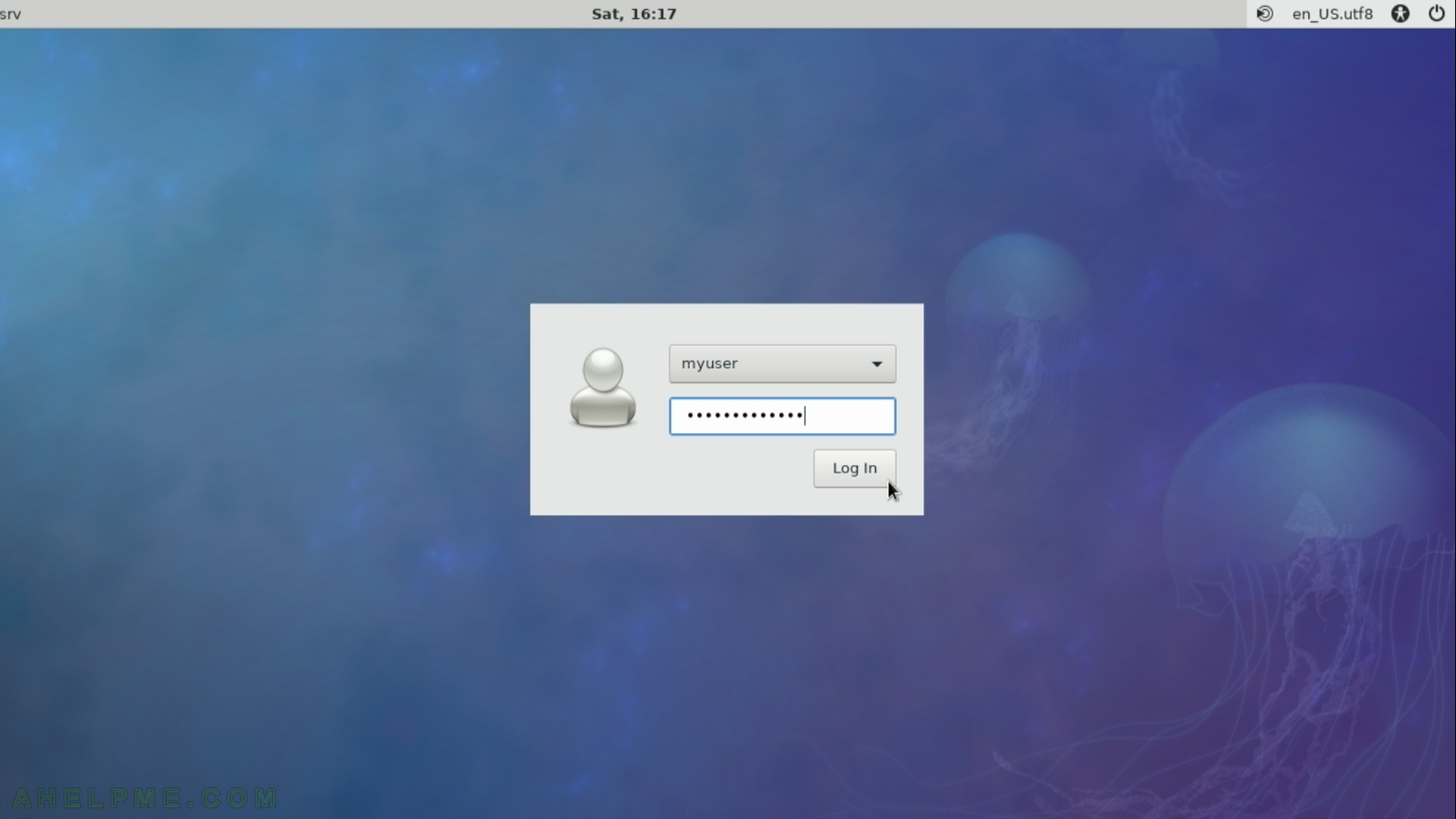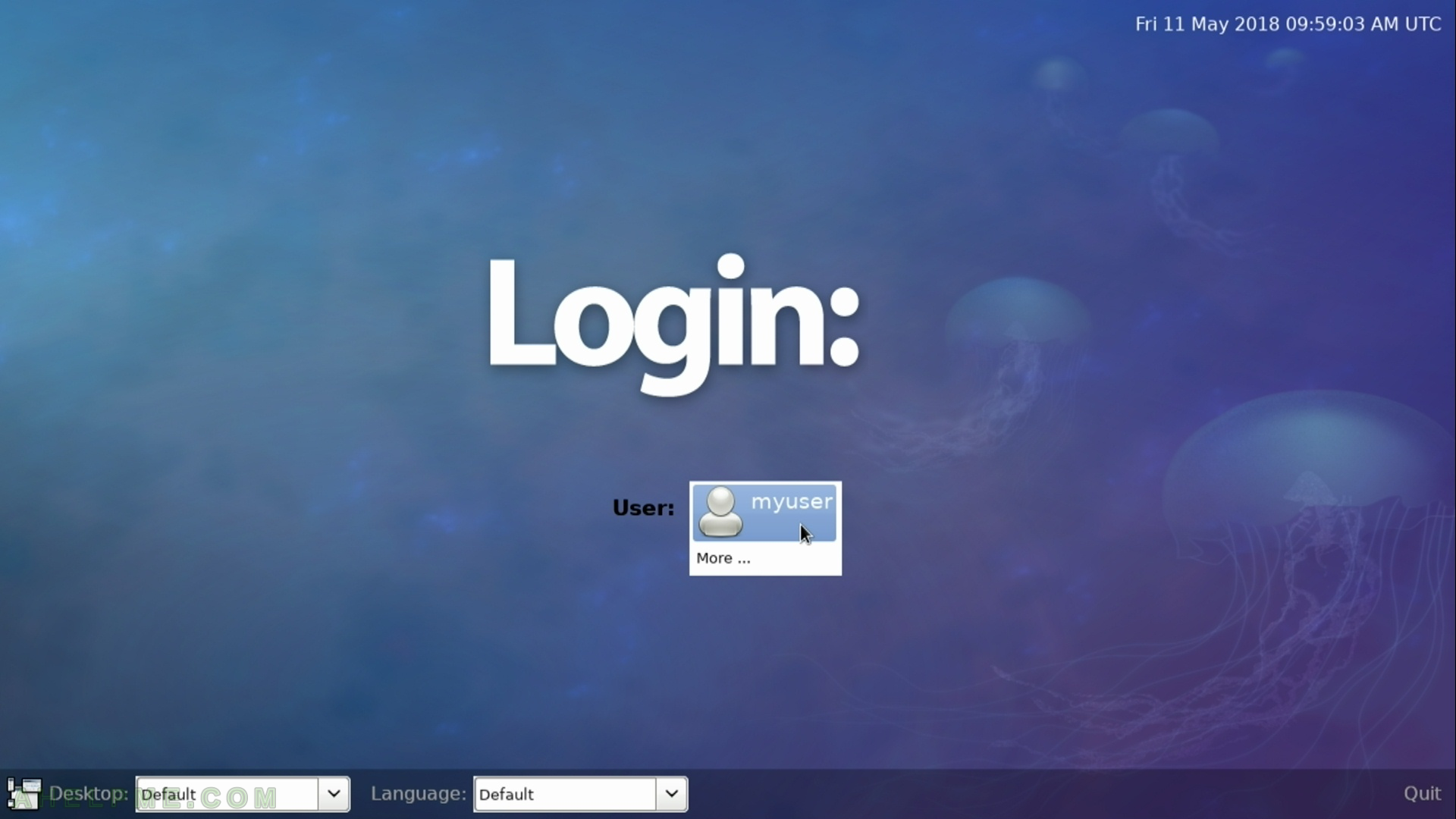After the tutorial of Install Fedora 27 LXQt Desktop this tutorial is mainly to see what to expect from a freshly installed Fedora 27 LXQt – the look and feel of the LXQt GUI – https://lxqt.org//
The idea of this tutorial is just to see what to expect from Fedora 27 LXQt – the look and feel of the GUI, the default installed programs and their look and how to do some basic steps with them, it is included also screenshots of the LXQt settings programs. Here you’ll find more than 90 screenshots and not so many text we do not want to turn this review of many text and version information and 3 meaningless screenshot, which you cannot see anything for the user interface, which these days is the primary goal of a Desktop system. You can expect more of this kind reviews in the future…
LXQt stands for Lightweight Qt Desktop Environment and it is a bundle of packages to offer a LXDE ported with QT libraries. It is still under heavy development, but at present it is pretty stable and nice looking light linux GUI (light as we can tell using QT, of course). Even using QT it maintains the idea of light and fast GUI as the original idea of LXDE using GTK3+. In fact in our opinion LXQt is nicer and better looking than LXDE and if you need a pretty system on not so new hardware you could give a try with it! If you are a fan of the old KDE, the KDE 3.5 you could become a fan of LXQt for sure! There is a great resemblance between them in the GUI (not the builtin application, because KDE has and had a lot more!).
Author: neoX
Install Fedora 27 LXQt Desktop
This tutorial will show you the simple steps of installing a modern Linux Distribution like Fedora 27 LXQt for the user graphical interface. LXQt stands for Lightweight Qt Desktop Environment and it is a bundle of packages to offer a LXDE ported with QT libraries. It is still under heavy development, but at present it is pretty stable and nice looking light linux GUI (light as we can tell using QT, of course). Even using QT it maintenances the idea of light and fast GUI as the original idea of LXDE using GTK3+. In fact in our opinion LXQt is nicer and better looking than LXDE and if you need a pretty system on not so new hardware you could give a try with it! If you were familiar with KDE 3.5 you would like LXQt for sure! There is a great resemblance between them in the GUI (not the builtin application, because KDE has and had a lot more!).
First we present the basic steps for installing the Operating system in addition to your present operating systems (here we have two: Windows 10 and Ubuntu) and then you can see some screenshots of the installed system and the look and feel of it. We have another tutorials showing more screenshots of the installed and working Fedora 27 LXQt (Gnome and KDE plasma) – so you can decide which of them to try first – coming soon. All of the installation setups are very similar for all GUIs of Fedora 27 it loads a live edition of the version of Fedora 27 you install and then the setup is launched by the user, the setup almost identical in all editions, but we do not want to give you a tutorials with “spaghetti” and unstructured flow of steps to follow.
We used the following ISO for the installation process:
https://download.fedoraproject.org/pub/fedora/linux/releases/27/Spins/x86_64/iso/Fedora-LXQt-Live-x86_64-27-1.6.iso
It is a LIVE image so you can try it before installing. The easiest way is just to download the image and burn it to a DVD disk and then follow the installation below:
STEP 1) If you booted from the DVD you would get this first screen – select “Start Fedora-LXQt-Live 27” and hit Enter
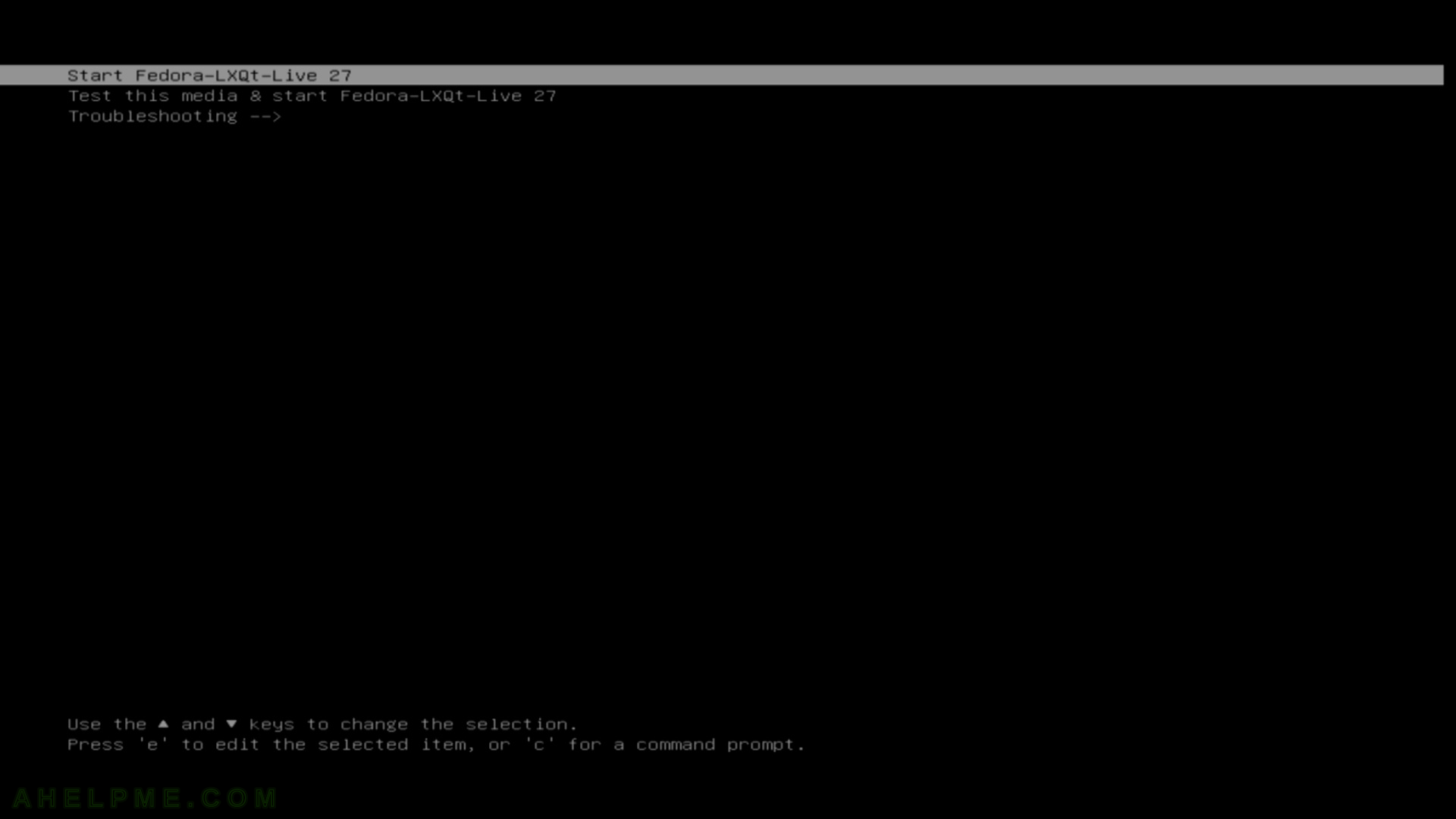
Keep on reading!
Review of freshly installed Fedora 27 MATE Compiz Desktop
After the tutorial of Install Fedora 27 MATE Compiz Desktop and this tutorial is mainly to see what to expect from a freshly installed Fedora 27 MATE Compiz – the look and feel of the MATE GUI – https://lxde.org/
The idea of this tutorial is just to see what to expect from Fedora 27 MATE Compiz – the look and feel of the GUI, the default installed programs and their look and how to do some basic steps with them, it is included also screenshots of the MATE and Compiz settings programs. Here you’ll find more than 100 screenshots and not so many text we do not want to turn this review of many text and version information and 3 meaningless screenshot, which you cannot see anything for the user interface, which these days is the primary goal of a Desktop system. You can expect more of this kind reviews in the future…
Fedora 27 MATE Compiz is really fast. MATE is the choice of people, which like the old and excellent GNOME 2 desktop environment, because the aim of the MATE is the continuation of GNOME 2. In combinations with Compiz you could have a modern 3D Experience and still be light to use on an old hardware. Compiz could be enabled and disabled in the settings so MATE could be used in really old hardware if you need a light, fast and more mature than LXDE (Review of freshly installed Fedora 27 LXDE Desktop) GUI.
SCREENSHOT 1)
Install Ubuntu 16.04 LTS on a PC with existing windows 10 and linux
This tutorial will show you the simple steps of installing a modern Linux Distribution – Ubuntu Desktop 16.04 LTS (in fact the version presented here is 16.04.4 Desktop LTS). Here we present the more advanced setup installation, when you have already had installed operating systems, so this installation will add Ubuntu 16.04 LTS to our two existing ones – Microsoft Windows 10 Professional and Ubuntu 17.10. So we have 4 disks – one is NVME, the other three are SSDs and we want to install our Ubuntu 16.04 to the third disk – “sdc” in this case. Our third SSD do not have partitions or any data, so we can use the whole device.
Ubuntu Desktop 16.04 LTS comes with the following software:
- Xorg X server – 1.19.5
- unity (the GUI) – 7.4.5
- linux kernel – 4.13.0
- linux-firmware – 1.157.17
- QT – 5.5.1
- libc – 2.23
- gnu gcc – 5.4.0
- coreutils – 8.25
- python2.7 (default) – 2.7.12
- python3 – 3.5.1
- perl – 5.22.1
- compiz – 0.9.12.3
- apt – 1.2.25
- cups – 2.1.3
We used the following ISO for the installation process – Ubuntu 16.04.4 LTS (Xenial Xerus):
http://releases.ubuntu.com/16.04/ubuntu-16.04.4-desktop-amd64.iso
It is a LIVE image so you can try it before installing. The easiest way is just to download the image and burn it to a DVD disk and then follow the installation below:
STEP 1) Change to “Install Ubuntu” and hit enter.
To install Ubuntu from your DVD or USB you must boot from it, so change your BIOS accordingly – first boot devide should be the DVD or USB drive with Ubunto installation. If you do it successfully you would see the screenshot below.
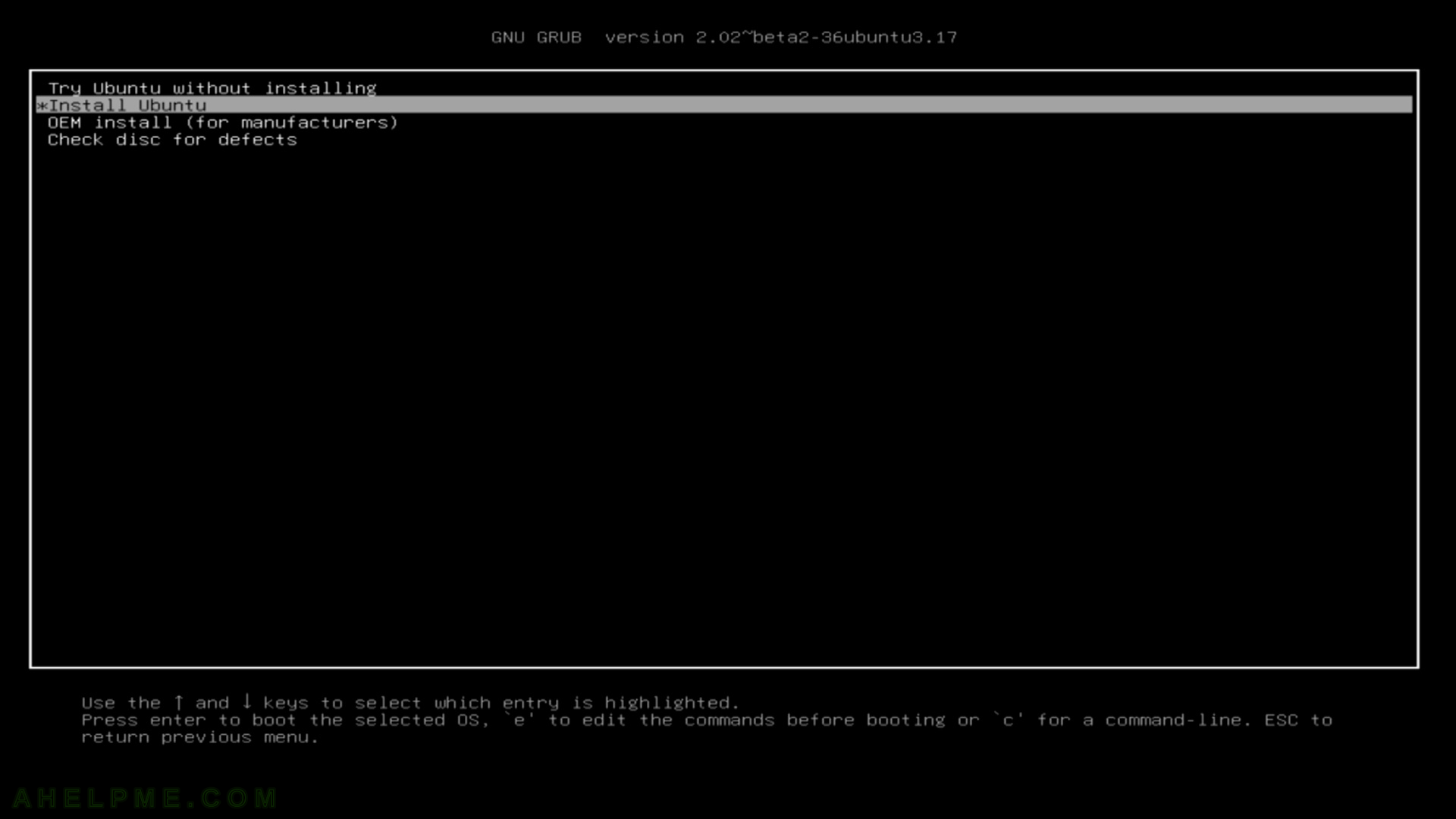
Keep on reading!
Install Fedora 27 MATE Compiz Desktop
This tutorial will show you the simple steps of installing a modern Linux Distribution like Fedora 27 MATE Compiz for the user graphical interface. The MATE Desktop Environment is the continuation of GNOME 2 and this GUI is for those who do not like Gnome 3 and where it is heading on. This GUI also is good for using with older hardware, but with Compiz could offer a modern 3D experience and effects. First we present the basic steps for installing the Operating system in addition to your present operating systems (here we have two: Windows 10 and Ubuntu 17) and then you can see some screenshots of the installed system and the look and feel of it. We have another tutorials showing more screenshots of the installed and working Fedora 27 MATE Compiz (Gnome and KDE plasma) – so you can decide which of them to try first – coming soon. All of the installation setups are very similar for all GUIs of Fedora 27 it loads a live edition of the version of Fedora 27 you install and then the setup is launched by the user, the setup almost identical in all editions, but we do not want to give you a tutorials with “spaghetti” and unstructured flow of steps to follow.
We used the following ISO for the installation process:
https://download.fedoraproject.org/pub/fedora/linux/releases/27/Spins/x86_64/iso/Fedora-MATE_Compiz-Live-x86_64-27-1.6.iso
It is a LIVE image so you can try it before installing. The easiest way is just to download the image and burn it to a DVD disk and then follow the installation below:
STEP 1) If you booted from the DVD you would get this first screen – select “Start Fedora-MATE_Compiz-Live 27” and hit Enter

Keep on reading!
Review of freshly installed Fedora 27 LXDE Desktop
After the tutorial of Install Fedora 27 LXDE Desktop and this tutorial is mainly to see what to expect from a freshly installed Fedora 27 LXDE Desktop – the look and feel of the LXDE GUI – https://lxde.org/
The idea of this tutorial is just to see what to expect from Fedora 27 LXDE – the look and feel of the GUI, the default installed programs and their look and how to do some basic steps with them, it is included also screenshots of the LXDE settings programs. Here you’ll find more than 87 screenshots and not so many text we do not want to turn this review of many text and version information and 3 meaningless screenshot, which you cannot see anything for the user interface, which these days is the primary goal of a Desktop system. You can expect more of this kind reviews in the future…
Fedora 27 LXDE is really light and fast. The default installation includes only minimum software, but you could always install additional packages. It really should be used on a old system or embedded devices (like ex-windows tablets with low memory), because the GUI do not have many features like panel customization and build-in programs. Still it is extremely fast and if you do not need a fancy look and customization you could use it!
SCREENSHOT 1)
vmware-modules failed with too many arguments to function smp_call_function and smp_call_function_single
vmware-modules is really tough to compile on a bleeding edge kernel like last versions from kernel.org When a new kernel is out the chances you cannot vmware modules are really big and if you look at the patches a gentoo build applies at present 40 (at the end you can see a log from Gentoo) an almost all begin with
kernel_version-[why_is_needed].patch
But apparently not only the patches are needed the CFLAGS are also important. And if you include
-fomit-frame-pointer in CFLAGS/CXXFLAGS
you’ll get into troubles! And this is not specific to Gentoo and probably not to specific kernel version, because there are reports from 2012 and before 2012! So if you have the following error:
In file included from /var/tmp/portage/app-emulation/vmware-modules-308.5.9/work/vmmon-only/linux/driver.c:69:0:
/var/tmp/portage/app-emulation/vmware-modules-308.5.9/work/vmmon-only/linux/driver.c: In function ‘LinuxDriverEstimateTSCkHz’:
/var/tmp/portage/app-emulation/vmware-modules-308.5.9/work/vmmon-only/linux/vmmonInt.h:88:15: error: too many arguments to function ‘smp_call_function_single’
smp_call_function_single(cpu, fn, info, 1, wait)
^
/var/tmp/portage/app-emulation/vmware-modules-308.5.9/work/vmmon-only/linux/driver.c:208:10: note: in expansion of macro ‘compat_smp_call_function_single’
err = compat_smp_call_function_single(0, LinuxDriverEstimateTSCkHzWork,
^~~~~~~~~~~~~~~~~~~~~~~~~~~~~~~
In file included from /usr/src/linux-4.16.3-gentoo/include/linux/percpu.h:7:0,
from /usr/src/linux-4.16.3-gentoo/include/linux/percpu-rwsem.h:7,
from /usr/src/linux-4.16.3-gentoo/include/linux/fs.h:33,
from /usr/src/linux-4.16.3-gentoo/include/linux/highmem.h:5,
from /var/tmp/portage/app-emulation/vmware-modules-308.5.9/work/vmmon-only/linux/driver.c:25:
/usr/src/linux-4.16.3-gentoo/include/linux/smp.h:32:5: note: declared here
int smp_call_function_single(int cpuid, smp_call_func_t func, void *info,
^~~~~~~~~~~~~~~~~~~~~~~~
In file included from /var/tmp/portage/app-emulation/vmware-modules-308.5.9/work/vmmon-only/linux/driver.c:69:0:
/var/tmp/portage/app-emulation/vmware-modules-308.5.9/work/vmmon-only/linux/driver.c: In function ‘LinuxDriverSyncCallOnEachCPU’:
/var/tmp/portage/app-emulation/vmware-modules-308.5.9/work/vmmon-only/linux/vmmonInt.h:34:50: error: too many arguments to function ‘smp_call_function’
#define compat_smp_call_function(fn, info, wait) smp_call_function(fn, info, 1, wait)
^
/var/tmp/portage/app-emulation/vmware-modules-308.5.9/work/vmmon-only/linux/driver.c:1224:4: note: in expansion of macro ‘compat_smp_call_function’
compat_smp_call_function(LinuxDriverSyncCallHook, &args, 0);
^~~~~~~~~~~~~~~~~~~~~~~~
In file included from /usr/src/linux-4.16.3-gentoo/include/linux/percpu.h:7:0,
from /usr/src/linux-4.16.3-gentoo/include/linux/percpu-rwsem.h:7,
from /usr/src/linux-4.16.3-gentoo/include/linux/fs.h:33,
from /usr/src/linux-4.16.3-gentoo/include/linux/highmem.h:5,
from /var/tmp/portage/app-emulation/vmware-modules-308.5.9/work/vmmon-only/linux/driver.c:25:
/usr/src/linux-4.16.3-gentoo/include/linux/smp.h:100:5: note: declared here
int smp_call_function(smp_call_func_t func, void *info, int wait);
^~~~~~~~~~~~~~~~~
distcc[32709] ERROR: compile /var/tmp/portage/app-emulation/vmware-modules-308.5.9/work/vmmon-only/linux/driver.c on localhost failed
make[3]: *** [/usr/src/linux-4.16.3-gentoo/scripts/Makefile.build:325: /var/tmp/portage/app-emulation/vmware-modules-308.5.9/work/vmmon-only/linux/driver.o] Error 1
make[3]: *** Waiting for unfinished jobs....
Revise your CFLAGS/CXXFLAGS environment variables and remove “-fomit-frame-pointer”.
In our system we used (manual compile/install):
export CFLAGS="-O2 -msse -msse2 -mssse3 -march=core2 -pipe"
export CXXFLAGS="${CFLAGS}"
export LDFLAGS="-Wl,-O1"
or for Gentoo configuration file /etc/portage/make.conf
CFLAGS="-O2 -msse -msse2 -mssse3 -march=core2 -pipe"
CXXFLAGS="${CFLAGS}"
LDFLAGS="-Wl,-O1"
* All needed patches in Gentoo for compiling vmware-modules 308.5.9 ( with vmware-player-12.5.9.7535481 ) successfully in a modern kernel
>>> Preparing source in /var/tmp/portage/app-emulation/vmware-modules-308.5.9/work ... * Applying 308-makefile-kernel-dir.patch ... [ ok ] * Applying 308-makefile-include.patch ... [ ok ] * Applying 308-netdevice.patch ... [ ok ] * Applying 308-apic.patch ... [ ok ] * Applying 308-3.10-00-dentry.patch ... [ ok ] * Applying 308-3.10-01-inode.patch ... [ ok ] * Applying 308-3.10-02-control.patch ... [ ok ] * Applying 308-3.10-03-inline.patch ... [ ok ] * Applying 308-3.11-00-readdir.patch ... [ ok ] * Applying 308-3.11-01-filldir.patch ... [ ok ] * Applying 308-3.15-00-vsock.patch ... [ ok ] * Applying 308-3.18-00-version-redefined.patch ... [ ok ] * Applying 308-3.19-00-compat-namei.patch ... [ ok ] * Applying 308-3.19-02-vmblock-path.patch ... [ ok ] * Applying 308-3.19-04-iovec.patch ... [ ok ] * Applying 308-3.19-05-vmci_qpair.patch ... [ ok ] * Applying 308-3.19-06-vsock.patch ... [ ok ] * Applying 308-3.19-07-vsock.patch ... [ ok ] * Applying 308-4.01-00-vsock.patch ... [ ok ] * Applying 308-4.02-00-nd_set_link.patch ... [ ok ] * Applying 308-4.02-01-sk_alloc.patch ... [ ok ] * Applying 308-4.03-00-vmci-misc_deregister.patch ... [ ok ] * Applying 308-4.05-00-vmblock-follow_link.patch ... [ ok ] * Applying 308-4.06-00-user-pages.patch ... [ ok ] * Applying 308-4.07-01-readlink_copy.patch ... [ ok ] * Applying 308-4.08-00-vmmon-fix-page-accounting.patch ... [ ok ] * Applying 308-4.09-00-user-pages.patch ... [ ok ] * Applying 308-4.10-00-generic_readlink.patch ... [ ok ] * Applying 308-4.11-00-missing-headers.patch ... [ ok ] * Applying 308-4.11-01-vsock-lockdep.patch ... [ ok ] * Applying 308-4.12-00-vmblock-current_time.patch ... [ ok ] * Applying 308-4.12-01-vmci-do_once.patch ... [ ok ] * Applying 308-4.12-02-vmci-pci_enable_msix.patch ... [ ok ] * Applying 308-4.13-00-vmnet-refcount.patch ... [ ok ] * Applying 308-4.13-01-vmmon-fix-page-accounting.patch ... [ ok ] * Applying 308-4.14-00-vmmon-global-page-state.patch ... [ ok ] * Applying 308-4.14-01-deprecated-asm-uaccess.patch ... [ ok ] * Applying 308-4.15-00-init_timer.patch ... [ ok ] * Applying 308-4.16-00-vmblock-iversion.patch ... [ ok ] >>> Source prepared.
In fact if you come from another linux distro and need some of the patches you could always download them if you need – just paste the name of the patch file in let’s say google and you’ll get the patch or you can always add vmware overlay, but you should have Gentoo.
Review of freshly installed Fedora 27 KDE Plasma Desktop
After the tutorial of Install Fedora 27 KDE Plasma Desktop this tutorial is mainly to see what to expect from a freshly installed Fedora 27 KDE Plasma Desktop – the look and feel of the new KDE GUI (version 5.12 of KDE Plasma).
The idea of this tutorial is just to see what to expect from Fedora 27 KDE Plasma – the look and feel of the GUI, the default installed programs and their look and how to do some basic steps with them, it is included also screenshots of the KDE settings program. Here you’ll find more than 160 screenshots and not so many text we do not want to turn this review of many text and version information and 3 meaningless screenshot, which you cannot see anything for the user interface, which these days is the primary goal of a Desktop system. You can expect more of this kind reviews in the future…
SCREENSHOT 1) Select and boot Fedora 27 KDE Plasma Desktop from our installed operating systems in grub menu
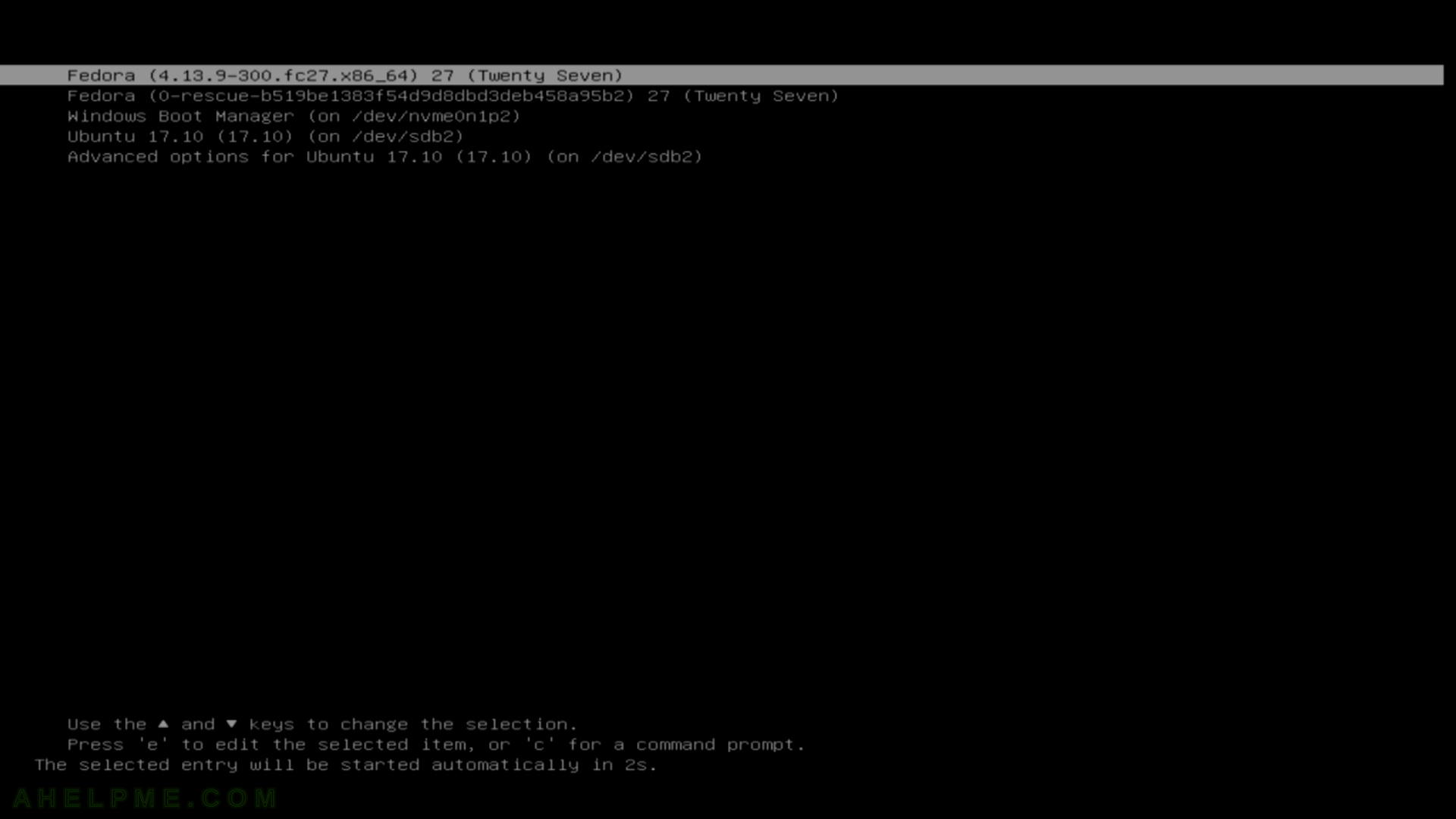
Keep on reading!
Install Fedora 27 LXDE Desktop
This tutorial will show you the simple steps of installing a modern Linux Distribution like Fedora 27 LXDE for the user graphical interface. LXDE stands for Lightweight X11 Desktop Environment and it has comparatively low resource requirements. This GUI is good for using with older hardware. First we present the basic steps for installing the Operating system in addition to your present operating systems (here we have two: Windows 10 and Ubuntu 17) and then you can see some screenshots of the installed system and the look and feel of it. We have another tutorials showing more screenshots of the installed and working Fedora 27 LXDE (Gnome and KDE plasma) – so you can decide which of them to try first – coming soon. All of the installation setups are very similar for all GUIs of Fedora 27 it loads a live edition of the version of Fedora 27 you install and then the setup is launched by the user, the setup almost identical in all editions, but we do not want to give you a tutorials with “spaghetti” and unstructured flow of steps to follow.
We used the following ISO for the installation process:
https://download.fedoraproject.org/pub/fedora/linux/releases/27/Spins/x86_64/iso/Fedora-LXDE-Live-x86_64-27-1.6.iso
It is a LIVE image so you can try it before installing. The easiest way is just to download the image and burn it to a DVD disk and then follow the installation below:
STEP 1) The system is resetting
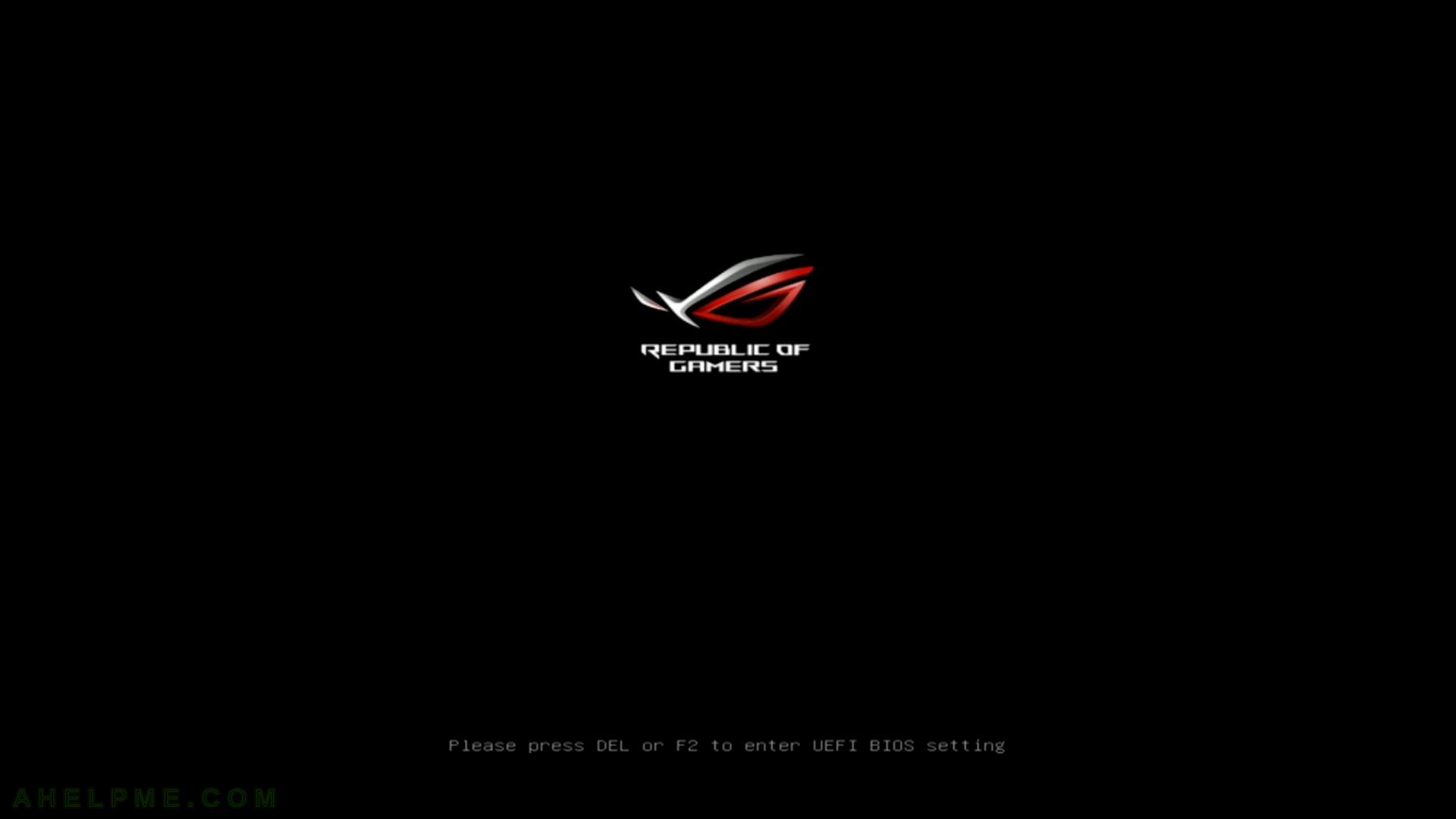
Keep on reading!
Add a raw disk to a virtualbox virtual machine
This is strange there is no way to add a physical disk to your virtual machine under virtualbox! Still it is possible and it is simple, but you need to execute few commands under console so you need to open a terminal and to have a root privileges!
To use a raw disk in our virtual machine we must create a special VMDK file and then to use it when adding a hard drive to our virtualbox virtual machine with “Use an existing virtual hard disk dile”.
Here are the right steps to add a raw disk:
STEP 1) Permissions – your user must have (write) permissions to access raw disks
In most cases your user do not have write permission to the disk – it is the same under MS Windows and any Linux distribution (and probably MAC)! So here is the right way how to give permissions under Linux and Windows:
- Under Linux (Ubuntu, Centos, Fedora, Gentoo and probably all other). There are at least two ways to give WRITE permission to the raw disk (use one of them, the first one is preferred). We want to add our third disk the “/dev/sdc” so the examples are with this device:
- add your user to “disk” group and log out. After you log in you’ll have WRITE permissions to the disks. Probably you must log off your GUI (Gnome, KDE and so on), too!
srv@local ~ $ sudo sudo usermod -a -G disk myuser
“myuser” is the username of the user I am logged in. The log out and log in (if you are using a GUI – gnome, kde or something else, you must log out from the GUI, too and then log in again).
- execute virtualbox with root user
- change the permission of the physical device you want to use (this is temporary, because next time you reboot you must change it again)
srv@local ~ $ sudo chmod o+rw /dev/sdc
- add your user to “disk” group and log out. After you log in you’ll have WRITE permissions to the disks. Probably you must log off your GUI (Gnome, KDE and so on), too!
- Under Windows 10 (or 7) – you must start the command prompt and Virtualbox with “run as Administrator” – look at the next step (STEP 2).


